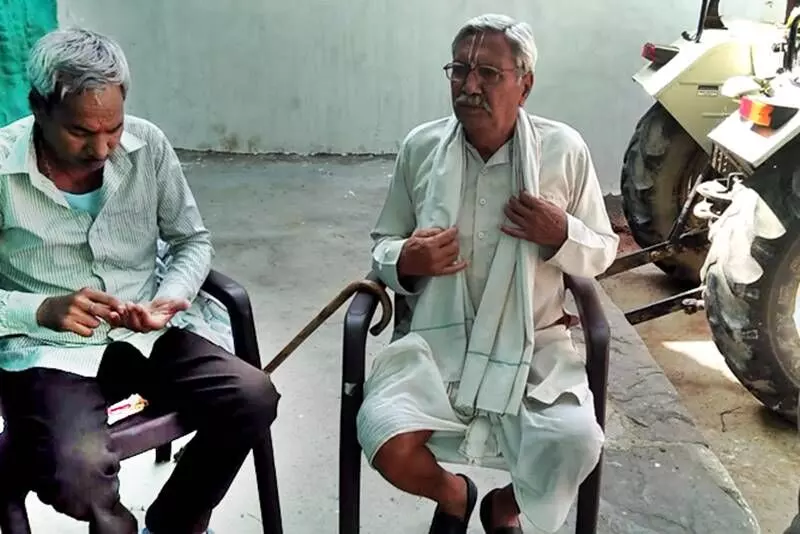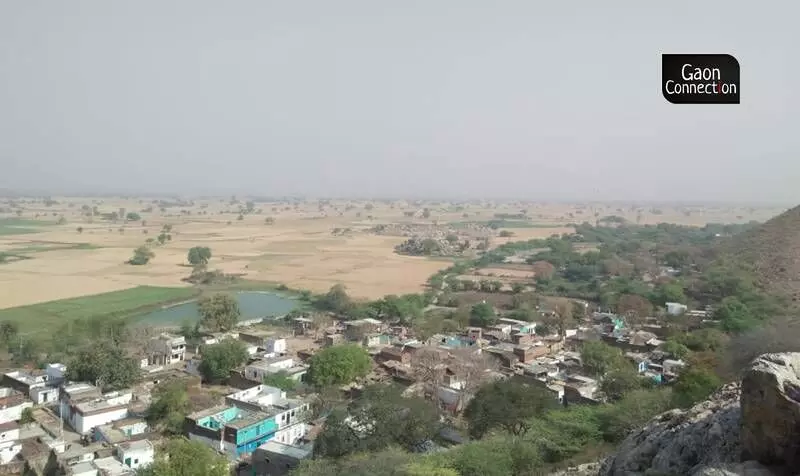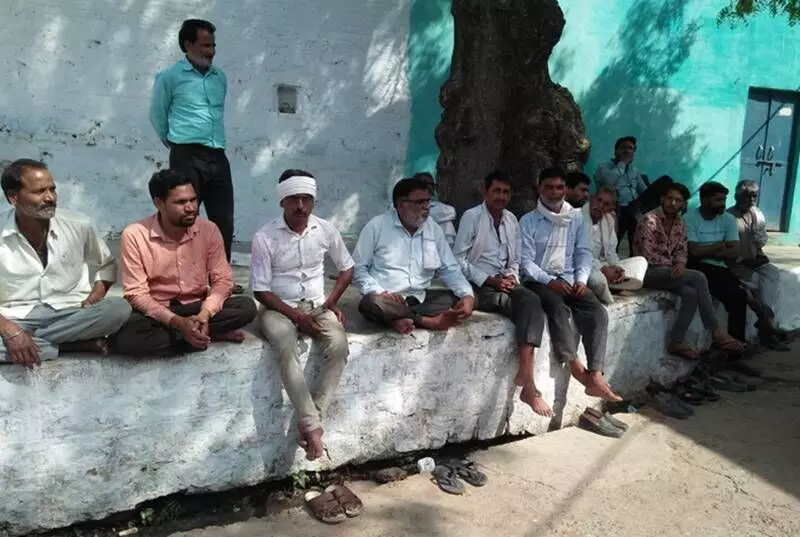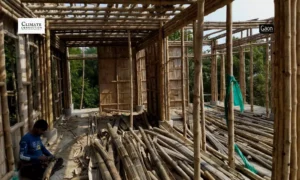Shivpuri, Madhya Pradesh
Tension is brewing in 32 villages of Shivpuri district where local residents have launched a massive protest under the banner of Sonchiraiya Hatao Andolan, threatening to block highways from April 15 onwards. In the eye of the storm is the Great Indian Bustard, a critically endangered bird that is locally known as Sonchiriya, and the Karera Wildlife Sanctuary notified for the conservation of this bird.
The villagers have issued an ultimatum to the government to denotify 32 villages that fall within the sanctuary boundaries and grant land rights to its residents, or else face heightened protests.
“For the last four to five decades, there is little that people who belong to this place can do to improve their livelihoods or even access fundamental rights like selling the land or the house which is their own,” Mahesh Sharma, a former sarpanch (village council head) of the Rajpur-Chetri village, told Gaon Connection. He claimed that as many as 80,000 people from these 32 villages were effectively living like migrants in their own native place.
Also Read: Cattle rearers in Rajasthan help conserve critically endangered Great Indian bustard

“Our ancestral land has been taken away by the sanctuary. Even the bird for whose conservation the sanctuary was set up is nowhere to be found here. What has this sanctuary accomplished other than holding the villagers hostage in their own land?” the 75-year-old lashed out. “Nobody even wants to get their daughters married to men from these 32 villages,” the angry villager added.
Protest against the Karera Wildlife Sanctuary
Situated at a distance of 386 kilometres from the state capital Bhopal, land measuring 202.12 square kilometres of the 32 villages of Narwar and Karera tehsils falls within the limits of the Karera Wildlife Sanctuary. This sanctuary was set up in 1981 to conserve the Great Indian Bustard which is a critically endangered bird, and the world’s heaviest flying bird. It is claimed that less than 150 such bustards are found in the country.
Because these villages fall within the sanctuary limits, their residents complain that they are not only deprived of development projects, such as access to regular electricity supply or setting up of a mobile tower, but also not allowed to sell their land holdings, which, the villagers allege, is an infringement of their rights.
“People here live their entire lives under the looming threat of being asked to vacate the area by the forest officials. We cannot even transfer our houses and our agricultural lands to the next generation even if we want to,” said Sharma.

Protesting villagers claim that because their villages fall within the sanctuary limits, they are unable to access several government schemes.
“People have suffered long enough. If the government doesn’t denotify the land belonging to the villagers by April 15, then we will hit the roads and block the highways as a mark of protest,” Krishna Rawat, spokesperson of the Sonchiraiya Hatao Andolan, told Gaon Connection.
When Gaon Connection approached Jasbir Singh Chauhan, the chief forest conservation officer in Madhya Pradesh’s Department of Forest, the official declined to comment on the issue.
But an official in the department informed Gaon Connection on the condition of anonymity that the case to denotify the area in which these 32 villages are located is sub-judice and a decision will hopefully arrive within the next six months.
Denotification of the sanctuary
It is important to note that an area spread across 111 square kilometres near the Karera Wildlife Sanctuary has already been denotified in the wake of the protests by the rural residents. The area which fell under the Ghatigaon Wildlife Sanctuary, and is situated almost 100 kilometres away in the neighbouring Gwalior district, was denotified in 2018.
The two sanctuaries, Karera and Ghatigaon, which are collectively known as the ‘sonchiraiya bird sanctuary’, were set up in 1981 following the alleged sighting of the Great Indian Bustard.
A forest official told Gaon Connection on the condition of anonymity that the bird was last sighted in 1993 but no such sighting has been recorded ever since.
No basic amenities, no brides
Protesting villagers claim that because their villages fall within the sanctuary limits, they are unable to access several government schemes. “We are not able to access the facilities provided by the Kisan Credit Card, which is available to farmers elsewhere across the country. Also, private banks do not provide loans to us as land is not registered officially and we do not have the papers to claim ownership,” Ramhit Rawat, a resident of Dehyala village, told Gaon Connection.
Hotam Singh, another farmer from the same village complained that despite the area being located in the fertile plains of the Sindh and Mahuar rivers, the villagers are struggling economically because agricultural enterprises cannot be set up on the sanctuary land.
“There is little money in just cultivating crops. The fields here are fertile but the farmers willing to set up agro-business cannot do so because it is a protected area,” he said.
Livelihood issues aside, villagers complain that matchmaking is becoming difficult in these 32 villages.

“I am a 32-year-old graduate. I work as a motor mechanic, I earn enough to sustain a household. But no family is ready to get their daughter married to me because I don’t own any land or house on paper,” Papeendra Rawat told Gaon Connection. “In my Devhara village with a population of almost 4,000 people, there are almost 700 people of marriageable age but are unable to find a bride,” he added.
Krishna Rawat, spokesperson of the Sonchiraiya Hatao Andolan, alleged that while villagers cannot carry out even basic activities due to sanctuary status, illegal sand mining was rampant on the banks of Sindh and Mahuar rivers in the area.
“Imagine sand mining is rampant inside the wildlife sanctuary but the local villagers are kept from selling their own lands. What kind of wildlife protection is that?” she added




















